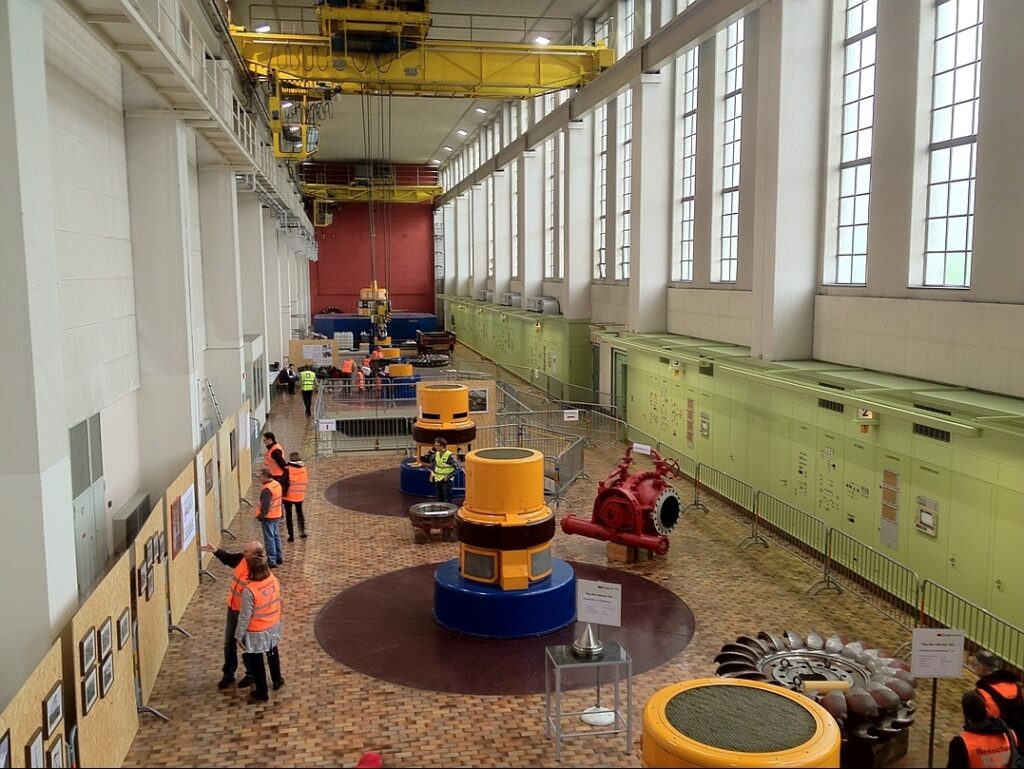Scientists have simulated the addition of floating solar panels to the Etzelwerk van Switzerland, a pump plant with open pumped storage. With 10% of the upper reservoir for the solar panels, the research team was able to add approximately 20% of the energy output.
A research group from the Italian University of Bologna has simulated that a Floating PV (FPV) plant is added to an existing pump to -storage hydropower (HP) plant in the Swiss pre -alpine area. The Etzelwerk is an open-loop pump storage hydraulic power plant, which uses the difference in height difference of approximately 480 m between Lake Sihl and Lake Zurich to generate electricity for the Swiss Federal Railways (SBB).
“We have analyzed the effects of solar hybridization by a multidisciplinary framework, in particular aimed at implications for water stocks,” said the corresponding author Domenico Micocci PV -Magazine. “Moreover, the study was conducted for a long-term simulation horizon of 38 years. This made a better characterization of hydro-climatic conditions possible that stimulate the availability of water and PV production.”
According to the researchers, the Etzelwerk -Fabriek currently consists of seven Pelton turbines, which can process up to 34 m3/s, which offers an installed capacity of 120 MW. In addition, three 5-phase pumps, with a total capacity of 54 MW, can pump water back from Lake Zurich to Lake Sihl.
In their simulation, the team assumed that an FPV factory is covering 10% of Lake Sihl. Based on a monocrystalline panel with a peak power of 375 MW and efficiency of 20.4%, on an area of 0.315 km2, the nominal capacity of the FPV site was 64.12 MW. The hydrological model was based on meteorological data in the period 1981-2018, while the demand levels were delivered to the researchers by the SBB.
“We simulated the activities of the Hybrid HP-FPV factory according to three different scenarios,” the academics explained. “NOPV was the basic scenario, without a PV to support HP. In the PV1 scenario, the FPV plant is introduced and Zonne -Energy, if available, contributes to the fulfillment of the demand and/or is used to pump water from Lake Zurich by Lake Sihl. Low current.
The results of the simulation showed that the addition of FPV to the plant had increased the total energy production by approximately 20%. In the case of NOPV, Hydropower has supplied an annual average of 256.6 GWH, PV1 has supplied a total of 319.1 GWH and PV2 has supplied 315.2 GWh. In PV1 the HP had supplied 257.7 GWH and the PV contributed 61.4 GWh; In the PV2 scenario it was 254.1 GWH and 61.1 GWH respectively.
“Thanks to hybridization, the plant does not fail much less than the conventional HP factory,” the team added. “The deficiency index, which is related to system reliability, decreases from 11.28% (scenario NOPV) to 3.24% (scenario pv1) and 3.53% (scenario pv2). Scenarios PV1 and PV2 differences do not seem to be significant: additional freest notes.
The analysis also showed that the extra release of water in scenario PV2 increases the average monthly discharge that provides downstream, from 14% in May to around 50% between June and August. “Our simulations show that there seems to be a potential to offer extra environmental releases to the power -reaching river range, without adding a strong invalid benefits in earlier studies, such as the increase in energy production and the improvement of the reliability of power supply,” concluded Micocci.
The research results were presented in “Hybridization of an Alpine Pumped-Storage Hydroppire Center with floating solar photovoltaic: an investigation from the perspective of water sources“Published in Renewable energy. Scientists from the Italian University of Bologna and the Swiss Federal Institute Forest, Snow and Landscape Research have contributed to the study.
This content is protected by copyright and may not be reused. If you want to work with us and reuse part of our content, please contact: editors@pv-magazine.com.
Popular content


